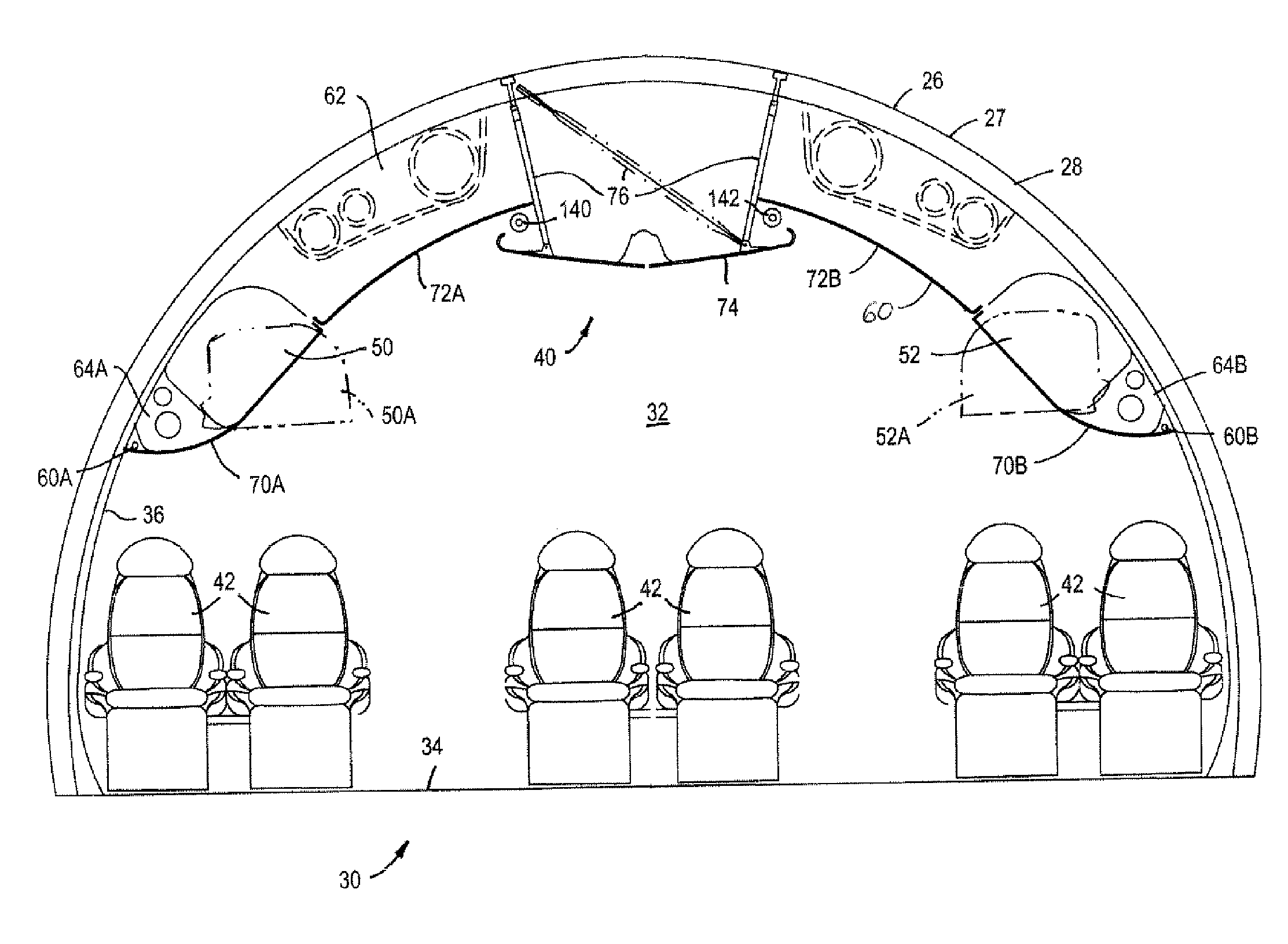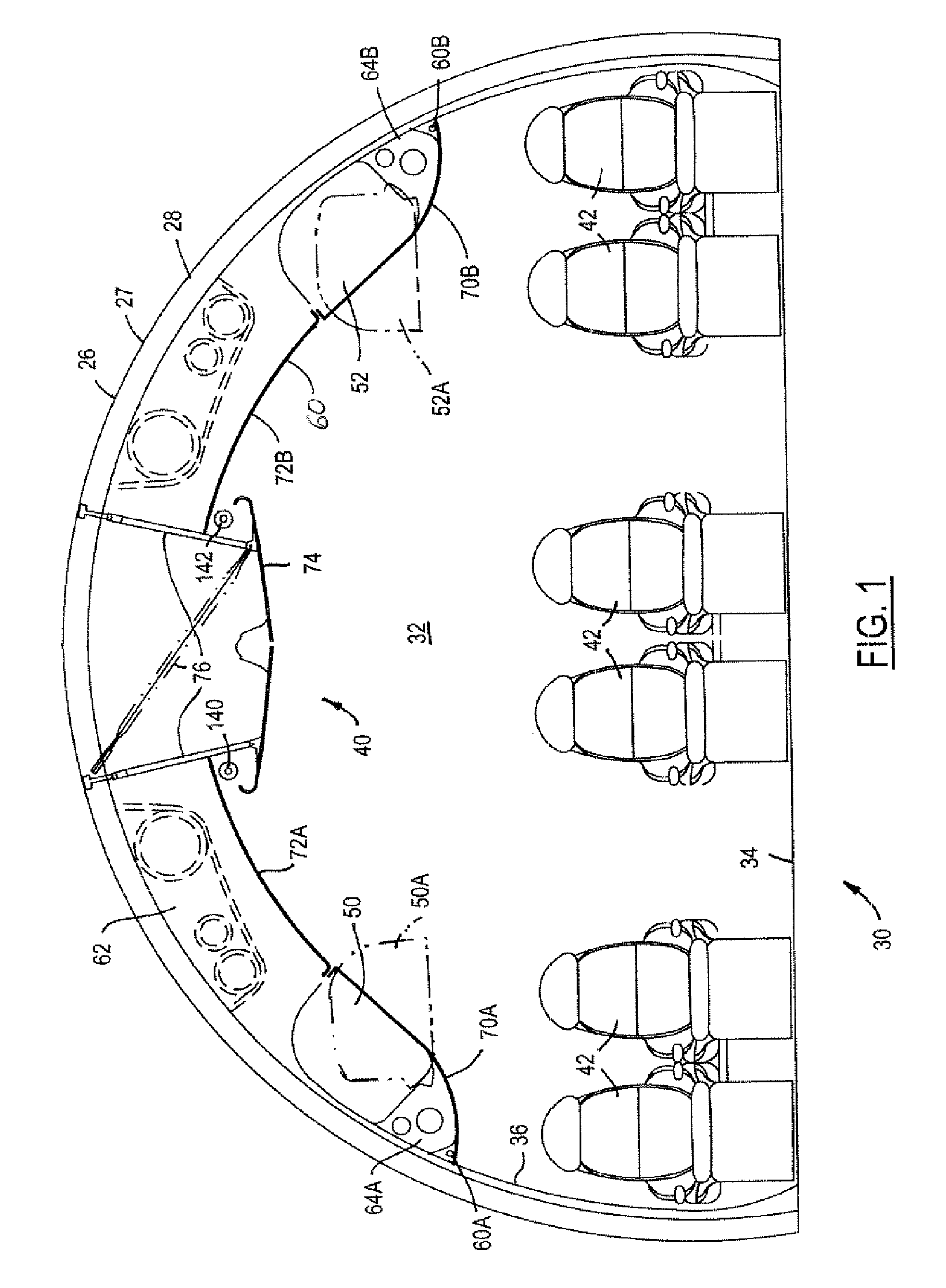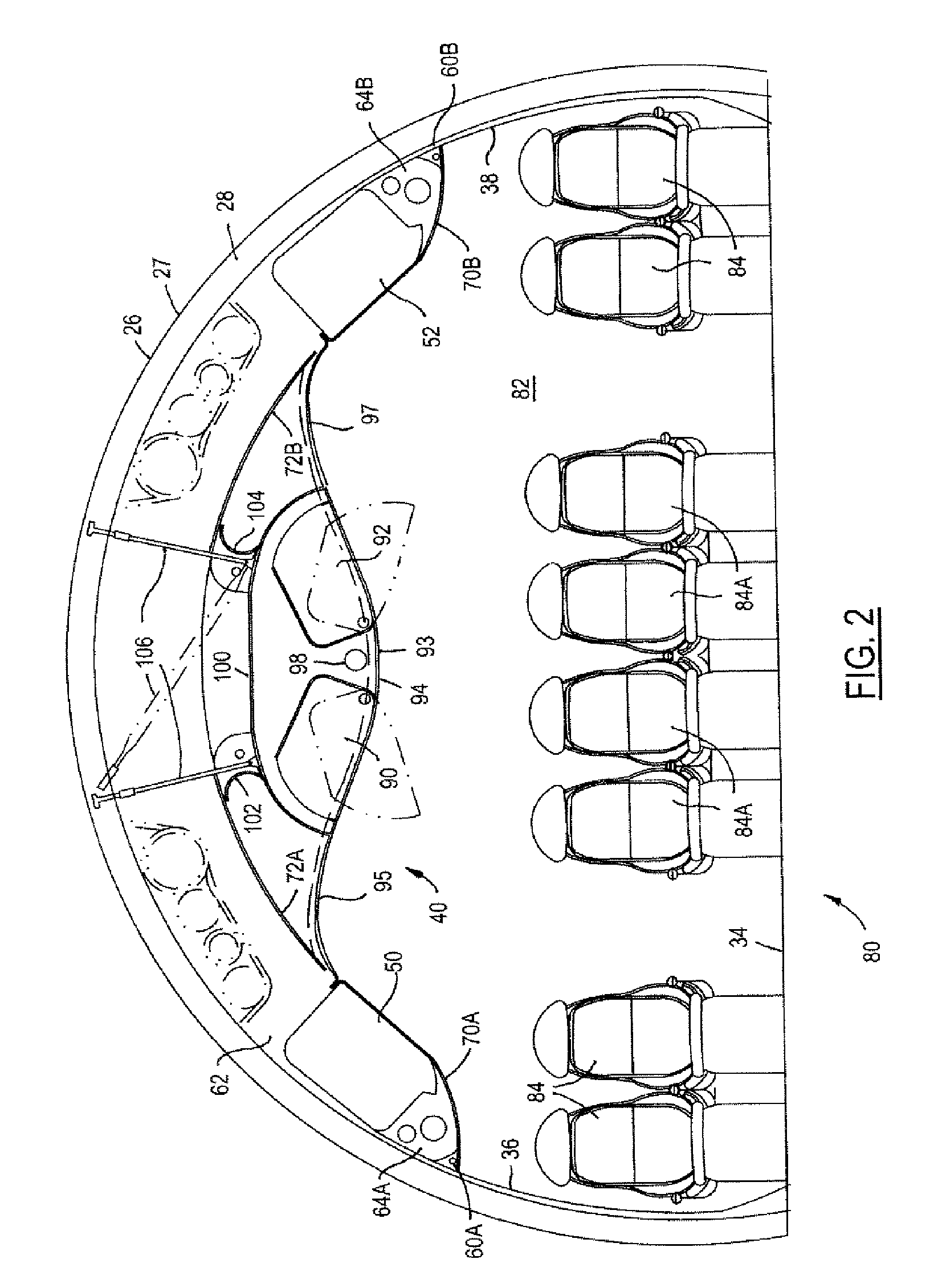Airplane interior systems
a technology for interior systems and aircraft, applied in aircraft crew accommodation, general lighting, mass transit vehicle lighting, etc., can solve the problems of claustrophobic and limited space in passenger cabins and airplanes, and achieve the effect of maximizing the interest, elegance and ergonomic quality of passenger space, and changing the perception of space inside the passenger cabin
- Summary
- Abstract
- Description
- Claims
- Application Information
AI Technical Summary
Benefits of technology
Problems solved by technology
Method used
Image
Examples
second embodiment
[0042]a passenger cabin structure 82 is shown in FIG. 2 and indicated generally by the reference numeral 80. Passenger cabin 82 has a two-four-two arrangement of passenger seats 84, 84A which indicates that this embodiment has typical application for an “economy” cabin of a passenger aircraft.
embodiment 80
[0043]Many of the structures and systems of the embodiment shown in FIG. 2 are the same as those shown in FIG. 1 and are designated by the same reference numerals. The primary difference is in the central part of the ceiling system 40. In the embodiment 80 shown in FIG. 2, two additional sets or rows of inboard stowage bins 90, 92 are provided for the passengers located in the central rows of passenger seats 84A. The luggage bins 90, 92 are positioned in the ceiling panel assembly 94 which has the approximate shape of the wing of a bird in flight with the “wings” extending outwardly on both sides. The ceiling panel assembly 94 has a concave curved center panel 93 in which the two stowage bins 90, 92 are positioned and two convex curved panels 95 and 97 which are curved to mate smoothly with the curvature of the outboard ceiling panel members 70A, 70 B in which the outboard stowage bins 50, 52 are positioned.
[0044]An additional passenger service unit 98 is positioned in the ceiling p...
PUM
 Login to View More
Login to View More Abstract
Description
Claims
Application Information
 Login to View More
Login to View More - R&D
- Intellectual Property
- Life Sciences
- Materials
- Tech Scout
- Unparalleled Data Quality
- Higher Quality Content
- 60% Fewer Hallucinations
Browse by: Latest US Patents, China's latest patents, Technical Efficacy Thesaurus, Application Domain, Technology Topic, Popular Technical Reports.
© 2025 PatSnap. All rights reserved.Legal|Privacy policy|Modern Slavery Act Transparency Statement|Sitemap|About US| Contact US: help@patsnap.com



